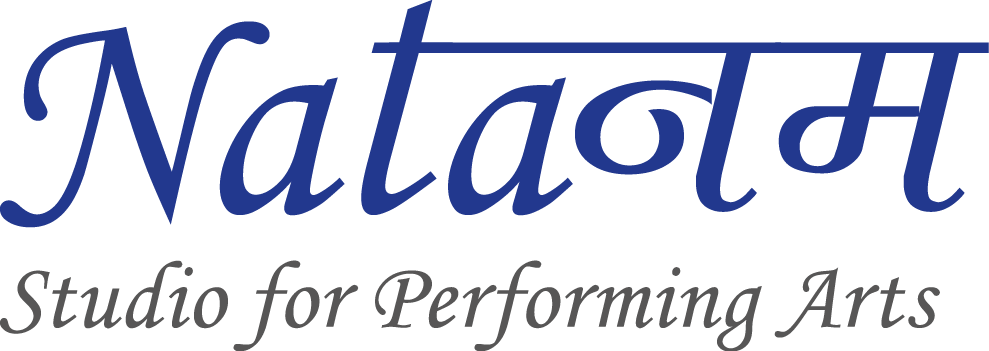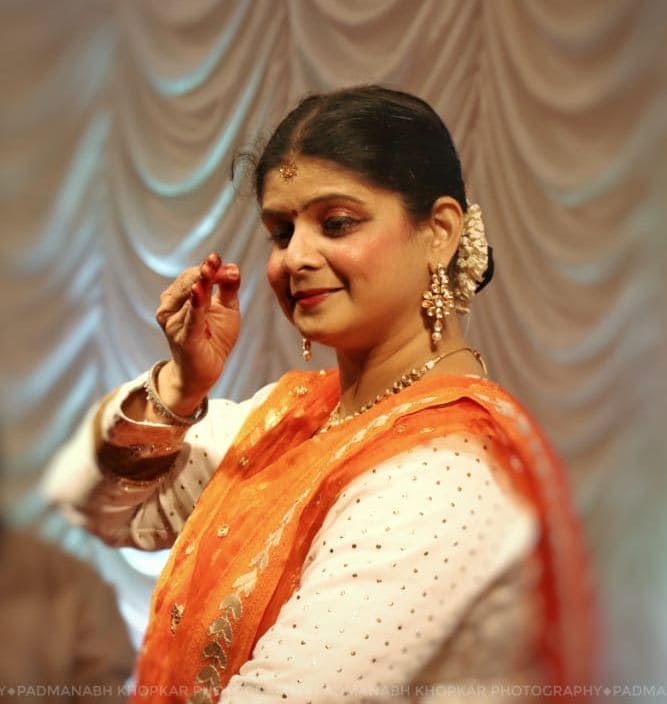4. Command on rhythm and technical know-how
Sense of rhythm and command on the Taal-cycle are qualities that demonstrates a dancer’s skill and mettle. The expertise of Laya and taal in Kathak is imperative for proficient presentation with Lehra as well as for good padhant. This capability called as sense of rhythm is considered inborn however, constant riyaj is also instrumental in building this capacity.
Along with the sense of rhythm, the Kathakar must also be well-accomplished with overall outline of the taal with sam, Khali, Bhari. He or she should also proficient in other aspects of taal such as various patterns of Jati’s, Yati’s, Graha (Atit and anagat).
5. Creativity (कलाभिज्ञा विद्याभीष्टप्रयोगज्ञा)
The dancer must also be able to innovate, re-imagine and experiment in the framework of Classicism according to the contemporary currents in the art. As an artist, they should also be responsive to the audience taste and the changing subject matters in the society. Nonetheless these experiments should be based on the courage of innovation backed by the detailed study of the subject.
6. Presentational skills: (सभाजय)
The dancer stuns and wins the audience by various skills including intricate and swift body movements, astonishingly speedy footwork, rendering complex sounds with feet and sometime by extra-ordinary jumps and leaps. Although these skills are considered gimmicky in classical dance contexts; deploying these methods with restraint can up the awe-factor and entertainment quotient of the performance. But it is important to understand that these methods or exaggerations must not be used to compensate for the lack of creativity, skill, riyaz and other parameters that are the foundations of a good presentation. These extraordinary methods are add-ons that embellish the performance and not core or crux of the dance-form.
The presentation skills for a Kathak dancer also include the ability to retain an expressive and lively countenance throughout the performance. One more critical quality is to build and establish an eye-contact with the audience in the performance. This quality is termed as सुतारा in the texts.
7. Spontaneity for Upaj (सुबुद्धित्व): Upaj is a technical word meaning the extempore or the impromptu part in the performance. A good dancer goes beyond the rehearsed matter and adds spontaneous colours in taal as well as bhaav anga. This capacity of the unscripted performance is built by the extensive experimentations and independent riyaj of Upaj.
8. Maintaining the bearing and composure (अत्रुटद् -रसता): This is the capacity of being in character or being in the composure of the performer throughout the performance. Performing with a live music is a challenge and it is furthered with maintaining the composed body language, adjusting with the live music (that may or may not be perfectly scripted) and simultaneously exhibiting the facial expressions flawlessly.
Also, an associated important quality is divided attentiveness where the dancer is absorbing the live music and handling the costume, gauging the spontaneous feedback from the audience, all at the same time. An accomplished dancer is the one capable of divided attention.
9. आरंभामोक्ष विज्ञत्वं- The age-old attribute mentioned in the scriptures is equally relevant today. The brilliance of impressive beginning of the performance and culminating closing is necessary for the ascending impact. Matured artist is the one who knows when to stop!
An associated attribute with this is the awareness about one’s own pluses and minuses and further wisdom of highlighting the pluses and hiding the minuses in the performance.
10. Curious enquiry (कुतुहलं): Curiosity about the cutting-edge waves in the global dance field and updating oneself with the knowledge of the new experiments in the dance, expands the vision of the dancer.
11. Acquaintance with vocal and instrumental music (गीतवाद्यानुकारित्व) :
Kathak dancer always performs as a team with the live musicians. The dancer must be sensible enough to present the performance as a team-work. He or she must pay due respect to the musicians and must not consider them as mere subordinate accomplices.
The knowledge of vocal and instrumental music or even formal training of the same proves to be an additional advantage for the dancer. Many renowned senior Kathakars are also accomplished in singing and tabla. Traditional style of Thumri presentation in Kathak also includes singing by the dancer himself and such presentation “स्वयं गा कर प्रस्तुती” is considered as extraordinary. Even the scriptures have classified that dancer as extra-ordinary who has the vocal skills too. As the Nrittaratnavali says: नर्तकी गायनी स्याच्चेत् भोगिनी पात्रमन्यथा॥ The dancer who is also a good singer proves to be an out of this world/superlative artist.
12. Physical attributes: The dance manuals have discussed the physical attributes of a female-dancer in more detail than the male. Being an audio-visual art, the body is the essential medium of the presentation. The dancer should have proportionate and shapely body, not too tall, not too short. The dancer may have a fair countenance or dark, but it should be fluidly expressive. However, Jayasena has a liberal approach towards physical attributes:
रूपयौवनयुक्तानां सहस्रेऽपि मृगीदृशाम्।
कलागुणसमेतानां नर्तकी नैव लक्ष्यते।
The dancer proficient in the art surpasses many other dancers with mere physical beauty. This stands true today as we witness many successful performers who may not be ‘beautiful’ as per stereotypical standards.
13. Teaching skills:
The shastras talk about this attribute regarding male dancers mainly, since traditionally male dancers were viewed as Acharyas or mentors or teachers whereas female dancers were mainly viewed as performers. However, the classical dance scene in 21st century makes the teaching skill essential for every dancer who considers dance as a full-time profession.
Apart from these dance-related attributes, the scriptures also mention some general human qualities necessary for a good artist. These include politeness, discipline, zero dependence on artificial stimulants, does not consume products that harms and the mind and body, etc. It mandates overall habits that are essential for physical and mental wellbeing alongside behaviour that is appropriate, virtuous, and beneficial to society.
Apart from these qualities mentioned traditionally in the dance manuals, in line with the current times, some other attributes are worth adding in the list:



